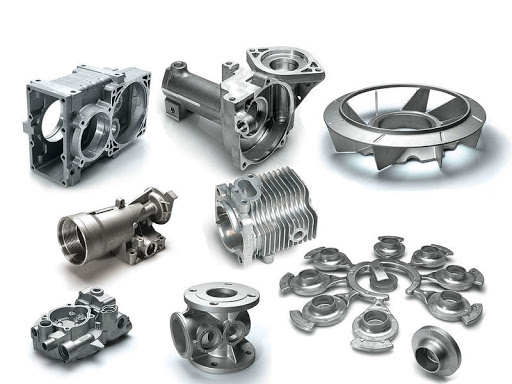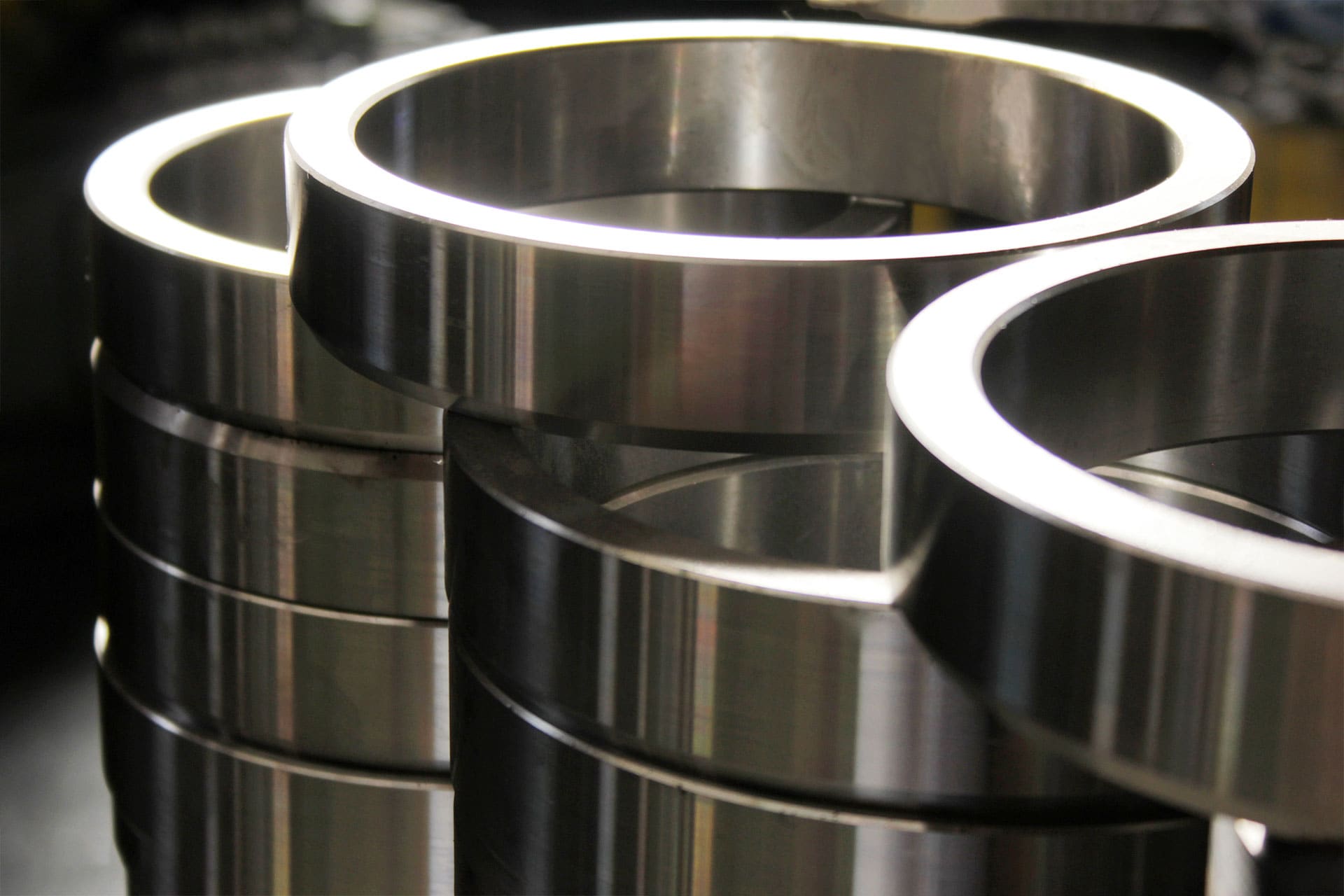The benefits of partnering with an experienced Aluminum Foundry
Wiki Article
All Concerning Light Weight Aluminum Castings: Comprehending Their Duty and Value in Production
Aluminum castings are integral to modern-day manufacturing, supplying a mix of lightweight residential or commercial properties and resilience. They facilitate complicated styles while reducing setting up expenses. Industries such as automotive and aerospace often utilize these elements for boosted efficiency. The manufacturing of light weight aluminum spreadings is not without its difficulties. Comprehending the nuances of this process exposes both the advantages and potential pitfalls. Exploring these factors will certainly provide much deeper insights into their expanding value.Introduction of Aluminum Spreading Processes
Aluminum casting procedures play a necessary role in manufacturing, offering flexibility and efficiency. These procedures entail putting liquified aluminum right into mold and mildews to produce accurate forms and components. Numerous techniques are used, consisting of sand spreading, pass away casting, and investment casting, each distinguished by its method of mold and mildew creation and the desired application.Sand spreading utilizes a blend of sand and binder to develop mold and mildews, permitting complicated geometries. Pass away casting, on the various other hand, includes forcing liquified light weight aluminum right into metal mold and mildews, resulting in high accuracy and smooth finishes. Financial investment spreading, often utilized for elaborate styles, entails producing a wax pattern covered with a ceramic covering, which is then loaded with liquified light weight aluminum.
These casting approaches provide to diverse industrial requirements, making light weight aluminum a recommended product for components in fields such as vehicle, aerospace, and customer products. The choice of casting method greatly affects the last item's quality and performance.
Advantages of Using Aluminum Castings
The benefits of using light weight aluminum castings in production are significant and various. To start with, light weight aluminum's light-weight nature adds to decreased overall item weight, enhancing energy efficiency in applications such as automobile and aerospace industries. Additionally, aluminum spreadings display excellent rust resistance, ensuring long life and toughness in harsh atmospheres. The material's thermal and electrical conductivity likewise makes it ideal for numerous applications, consisting of electronic devices and warmth exchangers.Additionally, aluminum castings can be created with elaborate designs, permitting for extra complicated forms that meet details useful requirements. This versatility adds to decreased setting up expenses and improved layout versatility. Additionally, the spreading procedure itself is effective, permitting for high-volume manufacturing with regular quality. Lastly, aluminum is recyclable, making it an eco-friendly choice in manufacturing. Collectively, these benefits highlight why light weight aluminum castings are progressively favored across varied fields, supplying both efficiency advantages and economic effectiveness.
Typical Applications of Aluminum Castings
While different products are made use of in production, aluminum spreadings stand apart as a result of their broad variety of applications across multiple markets. These castings are commonly used in the automobile field for engine components, transmission housings, and structural parts, contributing to lighter lorries and improved gas efficiency. In the aerospace industry, light weight aluminum castings are essential for airplane components, where weight decrease is essential for performance and security.Furthermore, the electrical industry employs light weight aluminum spreadings for housings and architectural aspects in machinery, gaining from the material's excellent conductivity. In durable goods, aluminum spreadings can be discovered in products such as home appliances and showing off devices, providing toughness and a contemporary aesthetic. In addition, the building market uses aluminum spreadings in building elements, window frameworks, and components, showcasing their convenience and toughness. Overall, aluminum spreadings play an important function in boosting item efficiency and performance across different markets.
Secret Production Techniques for Aluminum Castings
The manufacturing of light weight aluminum spreadings depends on various techniques, with sand casting and pass away spreading being among one of the most famous. Sand casting includes creating molds from sand, permitting for detailed designs and huge components. On the other hand, die casting makes use of high-pressure injection of molten light weight aluminum right into multiple-use mold and mildews, using precision and effectiveness for automation.Sand Spreading Process
Sand casting stands as one of one of the most extensively made use of approaches for generating aluminum spreadings, thanks to its versatility and cost-effectiveness. This process includes creating a mold from a combination of sand and a bonding representative, normally clay. When the mold is prepared, molten light weight aluminum is poured right into it, allowing the steel to fill up the cavity. After cooling down, the mold is escaped to disclose the spreading. Sand casting fits big components and intricate geometries, making it appropriate for various applications. In addition, it permits easy modifications, making it possible for producers to adjust designs promptly. However, the surface area coating may call for added machining for specific applications, guaranteeing the end product fulfills quality requirements.Die Casting Approaches
Pass away spreading represents a highly effective method for generating aluminum castings, characterized by its ability to supply high precision and exceptional surface area finish. This strategy mostly entails forcing molten light weight aluminum into a mold and go to my site mildew under high pressure, making sure that fine details and intricate shapes are caught accurately. There are two main die spreading approaches: warm chamber and chilly chamber. Warm chamber die casting is appropriate for alloys with reduced melting factors and enables faster cycles, while cool chamber pass away casting is suitable for high-temperature alloys, calling for separate melting systems. Both techniques improve manufacturing rates and decrease product waste, making die casting a recommended selection in sectors such as vehicle and electronic devices, where longevity and dimensional precision are extremely important.Sustainability in Light Weight Aluminum Spreading Manufacturing
While the demand for light weight aluminum castings proceeds to grow, makers are significantly focusing on sustainability in their production procedures. This shift is driven by the need to minimize ecological influence and conserve natural deposits. Lots of firms are taking on recycling initiatives, utilizing scrap aluminum, which especially decreases power intake and greenhouse gas discharges contrasted to key light weight aluminum production. In addition, advancements in casting modern technologies are making it possible for much more efficient use of materials, decreasing waste throughout the manufacturing procedure.Producers are additionally exploring eco-friendly choices to conventional spreading techniques, such as 3D printing and progressed mold and mildew technologies, which assist maximize resource usage. Aluminum Castings. Furthermore, implementing sustainable techniques in supply chain monitoring guarantees that basic materials are sourced properly. As a result, the light weight aluminum spreading sector is making strides toward an extra sustainable future, aligning with worldwide ecological objectives while meeting the enhancing demand for high-performance aluminum items
Difficulties and Factors To Consider in Aluminum Spreading
Light weight aluminum casting presents numerous obstacles that suppliers should navigate to assure product honesty. Design intricacy can make complex the casting procedure, bring about possible flaws and raised manufacturing time. Furthermore, keeping rigorous high quality control standards is important to satisfy the needs of precision and dependability in finished parts.
Design Complexity Issues
Designing components for aluminum spreading offers various intricacies that engineers must navigate to attain perfect outcomes. One considerable challenge is the demand for precise geometry; complex designs can result click for source in troubles in mold and mildew production and boosted threat of problems. Additionally, thermal residential properties of light weight aluminum require cautious factor to consider of cooling prices, as uneven air conditioning can cause bending. Wall density variants also position a challenge, as they can influence circulation features and structural honesty. Engineers must balance style looks with manufacturability, ensuring that attributes such as fillets and ribs are optimized for strength without complicating the casting process. Lastly, considerations pertaining to draft angles are necessary to facilitate mold and mildew launch, more making complex the design process. These variables jointly emphasize the ins and outs included in light weight aluminum spreading layout.Quality Assurance Difficulties
Achieving premium light weight aluminum castings entails navigating an array of quality assurance difficulties that can significantly affect the final product. Variations in raw product composition can lead to incongruities in casting homes, making it essential to guarantee material high quality. Second, the casting procedure itself is vulnerable to problems, such as porosity and contraction, which can compromise architectural honesty. Furthermore, temperature control during melting and putting is critical; variations can lead to uneven solidification, affecting dimensional accuracy. Moreover, detailed evaluation techniques, consisting of non-destructive screening, need to be utilized to recognize flaws early. Finally, keeping strict process documentation and adherence to industry requirements is indispensable for traceability and quality control, highlighting the elaborate balance required to create dependable aluminum spreadings in production.Future Trends in Light Weight Aluminum Casting Technology
As producers endeavor to improve efficiency and sustainability, innovations in aluminum spreading technology are arising to fulfill these demands. One substantial fad Visit This Link is the integration of automation and man-made intelligence, which improve manufacturing procedures and improve accuracy in casting procedures. These developments reduce human error and maximize resource use, inevitably resulting in cost reductions.Additionally, the fostering of advanced materials and alloys is reshaping the landscape. New formulas boost performance features, such as corrosion resistance and light-weight residential properties, making aluminum spreadings much more flexible across numerous sectors.
Additionally, lasting methods are getting traction, with a concentrate on recycling and minimizing waste. Methods such as 3D printing are likewise being checked out to develop complex geometries that were previously unattainable
Often Asked Questions

Exactly How Do Aluminum Castings Compare to Various Other Materials?
Light weight aluminum castings use benefits such as light-weight, deterioration resistance, and excellent thermal conductivity compared to various other materials. They are frequently preferred for applications calling for toughness and effectiveness, specifically in automotive and aerospace markets.What Is the Life-span of Aluminum Castings?
The lifespan of aluminum spreadings commonly varies from 10 to 50 years, depending upon environmental problems, use, and maintenance. Their rust resistance and resilience add significantly to their lasting efficiency in various applications.Can Aluminum Castings Be Reused?
Yes, light weight aluminum castings can be reused. The recycling process is effective, permitting the healing of aluminum without substantial loss of top quality, making it a sustainable choice in production and minimizing environmental impact.What Safety And Security Procedures Are Needed During Aluminum Spreading?
Throughout aluminum casting, vital safety measures include putting on suitable personal safety equipment, making certain correct ventilation, keeping equipment, making use of fire-resistant materials, and executing risk-free handling procedures for liquified steel to stop injuries and accidents.Exactly How Do Temperature Adjustments Impact Aluminum Castings?
Temperature level modifications noticeably affect aluminum spreadings by affecting fluidness, solidification prices, and mechanical buildings. Fast air conditioning can lead to enhanced brittleness, while gradual cooling promotes much better architectural integrity and reduces the risk of issues.Pass away casting, on the other hand, includes requiring liquified aluminum into metal molds, resulting in high accuracy and smooth finishes. The production of aluminum castings depends on different strategies, with sand casting and die spreading being amongst the most famous. Sand spreading stands as one of the most extensively made use of methods for producing aluminum castings, thanks to its adaptability and cost-effectiveness. Die spreading stands for a very reliable method for generating aluminum spreadings, identified by its ability to supply high accuracy and superb surface area finish. While the need for aluminum spreadings continues to grow, producers are significantly prioritizing sustainability in their manufacturing procedures.
Report this wiki page